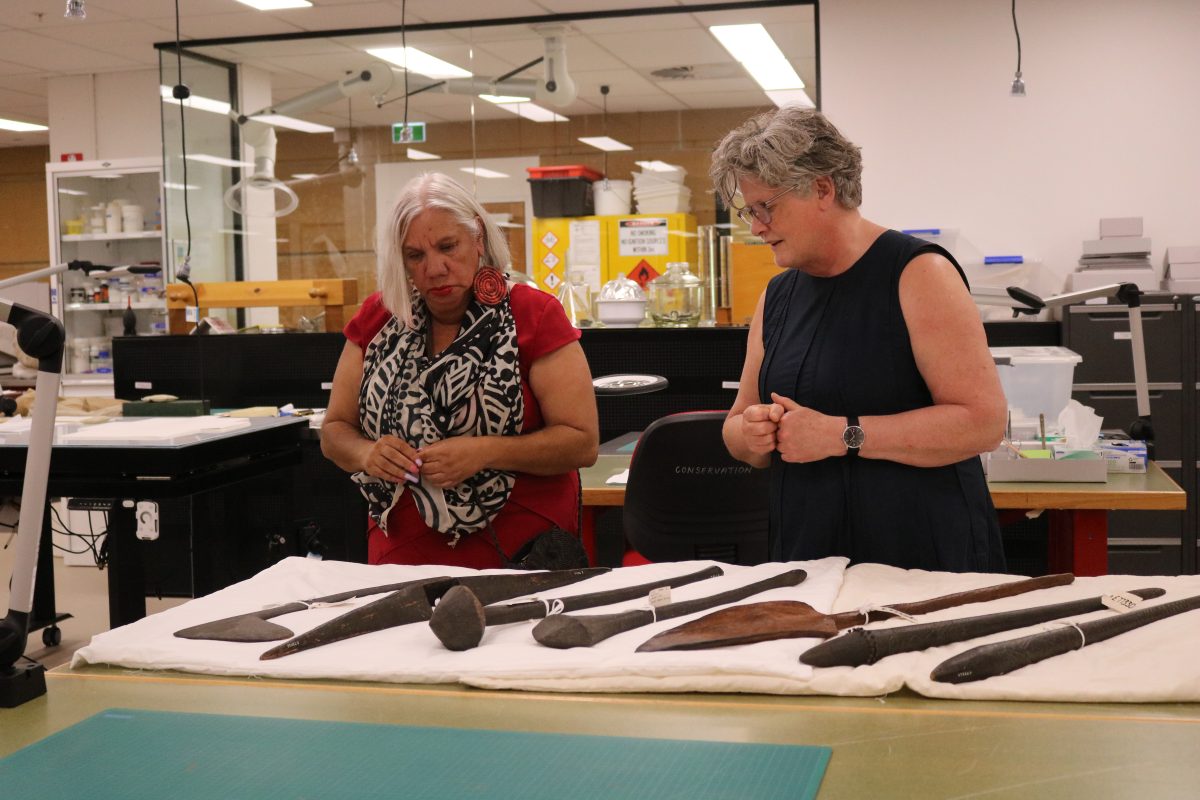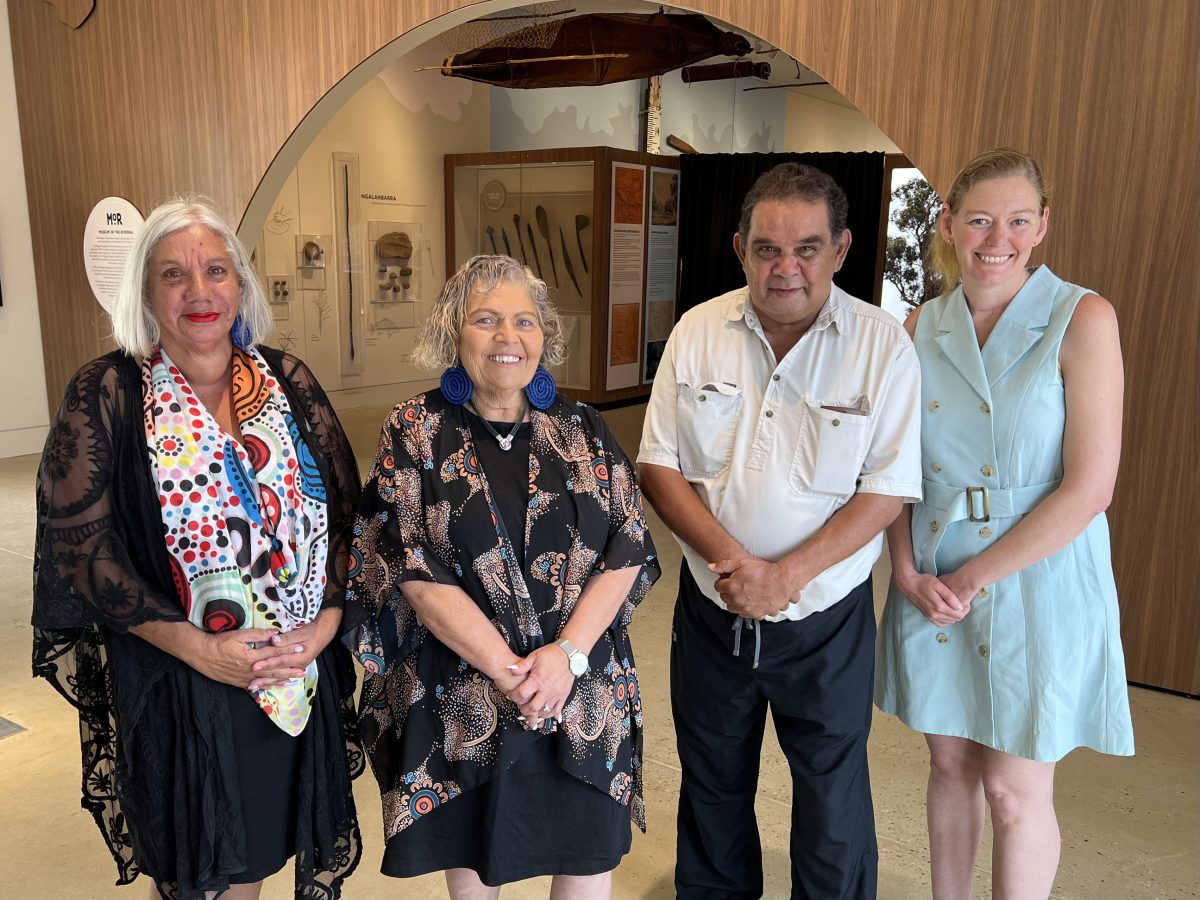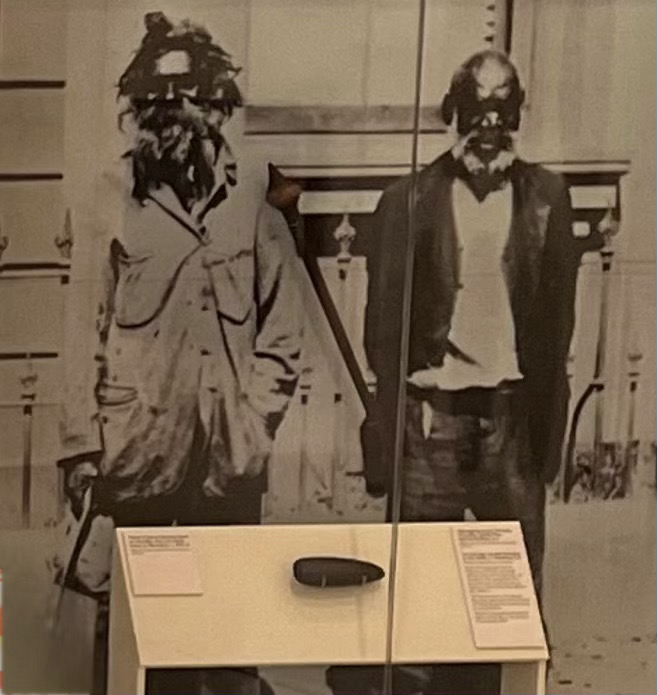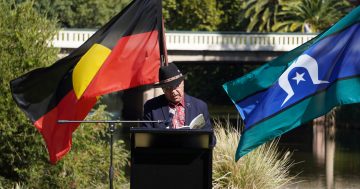
Aunty Cheryl Penrith and Dr Robyn McKenzie from the ANU examine Aboriginal artefacts in Sydney. Photo: Supplied.
The repatriation of artefacts to their cultural homes is one of the hottest topics in museums across the world, and Wagga is gearing up to host a three-day symposium on the topic of ”Return”.
Museum of the Riverina and the Australian National University are collaborating on the event that will bring together Indigenous people, researchers and museum professionals from throughout the country to talk through this complex issue.
“Museums have supposedly changed since the 1980s and there’s a kind of a catchphrase that they used to be about objects, but now they’re about people,” said ANU’s Dr Robyn McKenzie, who is behind the event.
“The museum sector is becoming more concerned with how people interact with the objects than about just displaying things with a card like ‘This is a special teacup from 1824’ or things like that.
“So that’s the theory, but we want to explore how that actually works in practice.”
In January, Dr McKenzie was instrumental in the transfer of seven highly significant cultural objects from the Australian Museum First Nations collection to Wagga’s new facility.

Aunty Cheryl Penrith, Aunty Mary Atkinson, Uncle James Ingram and Sam Leah from the Museum of the Riverina. Photo: Chris Roe.
Aunty Cheryl Penrith travelled to Sydney on behalf of the Mawang Gaway Wiradyuri Gallery Reference Group to oversee the journey.
“It’s been a really fantastic collaboration between the advisory committee, the Museum of the Riverina and the Australian Museum,” she said after the historic unveiling of the artefacts.
“It’s really rewarding to see something come together and it’s here in the museum, it’s a really emotional and fantastic feeling.”
Uncle James Ingram said cultural protocols had been observed at every stage of the process and after decades of advocating, it was gratifying to see Wiradyuri culture being restored.
“They did a smoking ceremony and a send-off ceremony in Sydney for the artefacts before they cruised down this way and then when they crossed into Wiradyuri Country, they got out and let the artefacts breathe the air,” he said.
“It’s a real thing for us to have these significant artefacts returned to our Country because we have these in places all over the world and we need to talk about connecting those dots to artefacts in England and other places. So I’m looking forward to the symposium.”
Dr McKenzie said the recent Wagga initiative was an important example of how evolving museum theory was implemented and members of the reference group would share their experience.
“With these artefacts, when they were first returned, we held an open community session where they could be picked up and looked at,” she explained.
“So it will be important to consider these types of things where younger Indigenous people could come and interact with those artefacts and connect in that way.”
Uncle James said the next step locally was to establish a Wiradyuri centre.
“We’ve been given an opportunity to do the work with the Museum of the Riverina up there on Willans Hill, but that’s just a taster as to what we can do when we get a Wiradyuri museum and keeping place,” he explained.
“There is no shortage of significant stuff and we want to showcase the best of it and the best stories and celebrate those people like [civil rights leaders] Bill Ferguson and Jacky Patton and William Cooper. People should know those stories.”

In 1927, Jimmy Clements and John Noble walked from Brungle Mission to Canberra for the opening of Old Parliament House. Photo: Chris Roe.
Uncle James said the display at the entrance to the new Museum of the Riverina was an example of the way objects and stories from the past could inform the present.
Visitors are greeted with photos and artefacts that belonged to Jimmy Clements and John Noble who, in 1927, walked from Brungle Mission, near Tumut, to Canberra for the opening of the new Provisional Parliamentary House, which no Aboriginal people had been invited to attend.
“Given that this is the year of the referendum, Clements and Noble went to Old Parliament House to speak on our behalf, that’s a really significant thing when you think about it,” he said.
“When you think about all those heroes right up to today who have been fighting to be heard, we need to tell those stories.”
The three-day symposium runs from 27-29 June at the Riverina Playhouse and will be live-streamed. You can find more details here.








